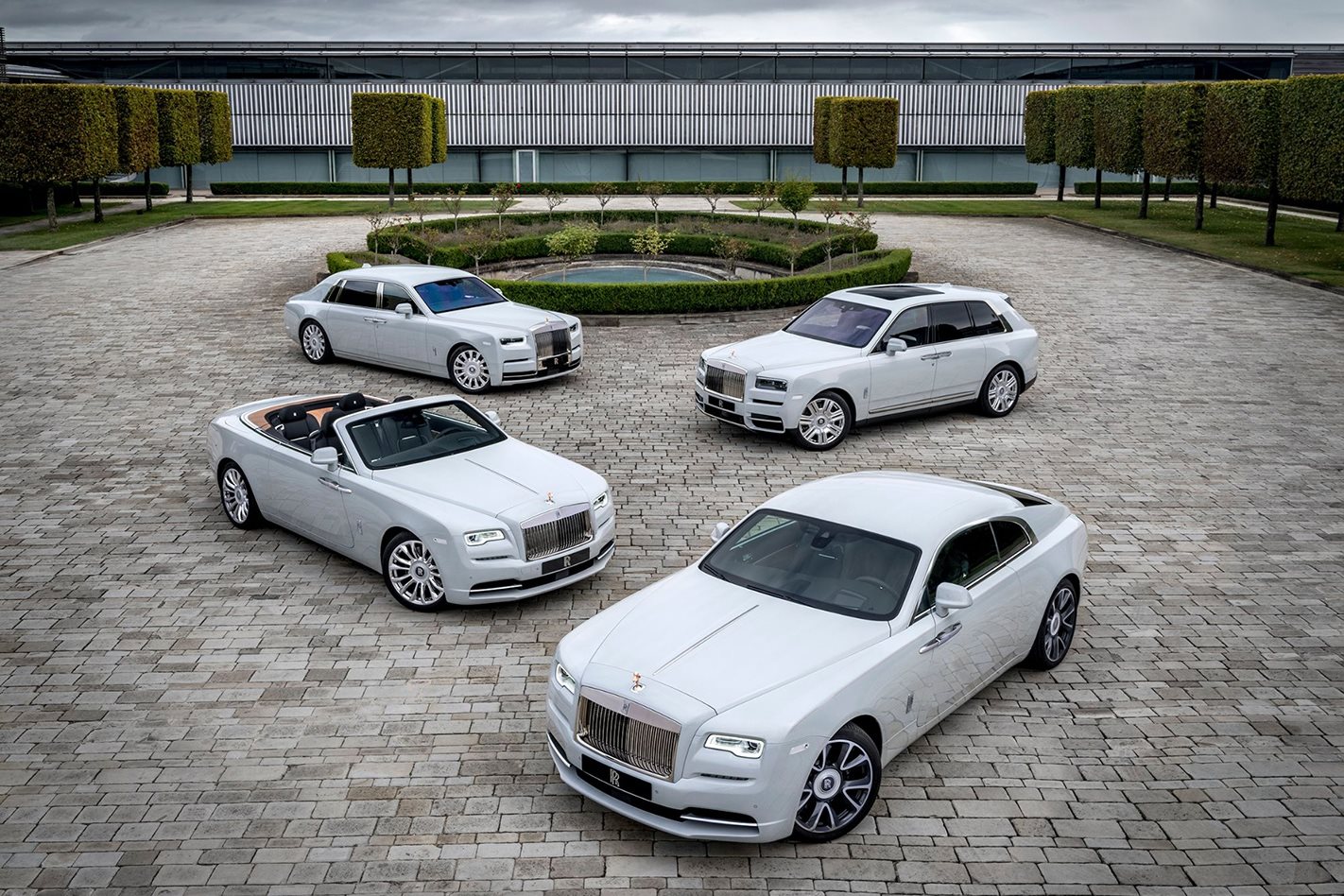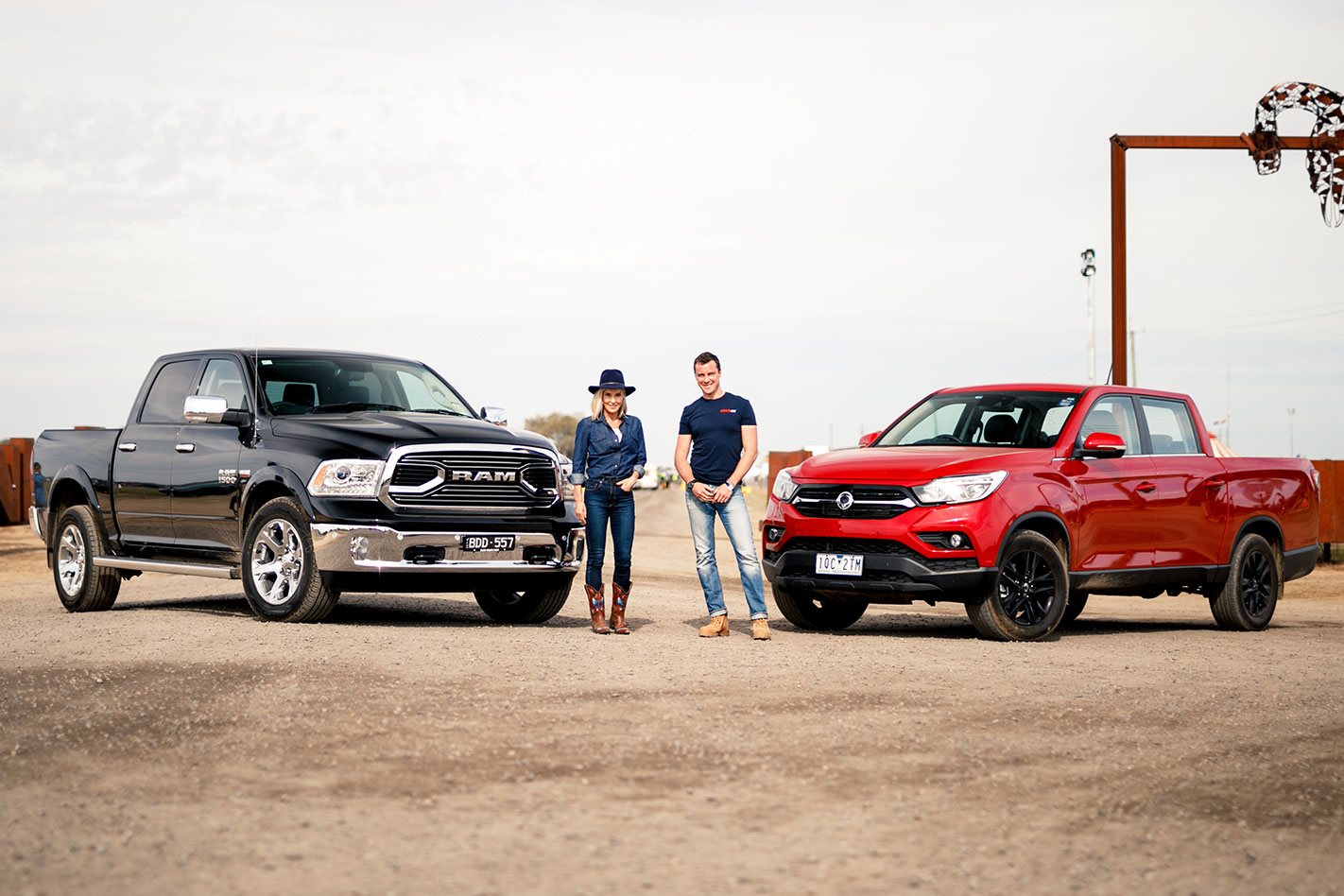
Everyone remembers a particularly special 21st that stands out from the others. Whether it be that party where someone filled the street with burnout smoke, set fire to a car or decided to ride a bull. Or perhaps it was the one where a guest picked up a guitar and delivered a set that would have made Farnham weep. Or maybe it was the one where your Nan shared a table with a toothless guy whose blood had an octane rating, but they’re still friends on Facebook to this day.
But if you had made your way to the southern New South Wales town of Deniliquin last weekend you could have attended a 21st that had not just one of those defining features, but all of them and more.
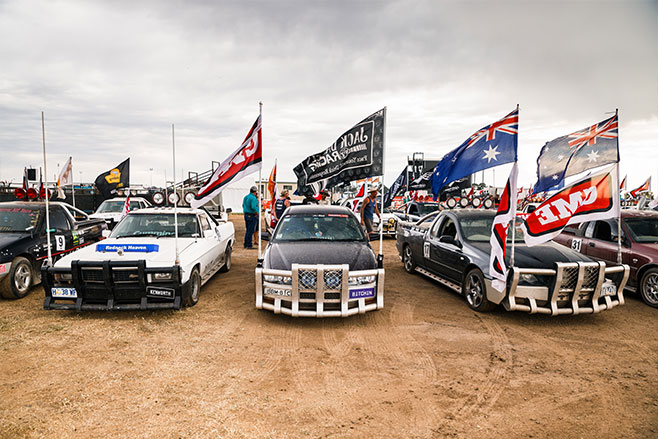
This year, the Deni Ute Muster turned 21 and it has left a mark more indelible than a doughnut on an industrial estate, but amid the festivities and celebration of the world’s biggest ute gathering, there was an elephant wandering the dusty paddocks.
Click on main pic for more 2019 Deni Ute Muster images by Nathan Jacobs
When Holden followed Ford’s lead and put the final nail in Australian manufacturing in 2017, the bloodline of locally made vehicles was severed along with the supply of new car-based utes. Following the announcement that there would no longer be a Ford Falcon or Holden Commodore Ute however, the respective companies were quick to point out that they offered a substitute in the form of a Ranger and Colorado.
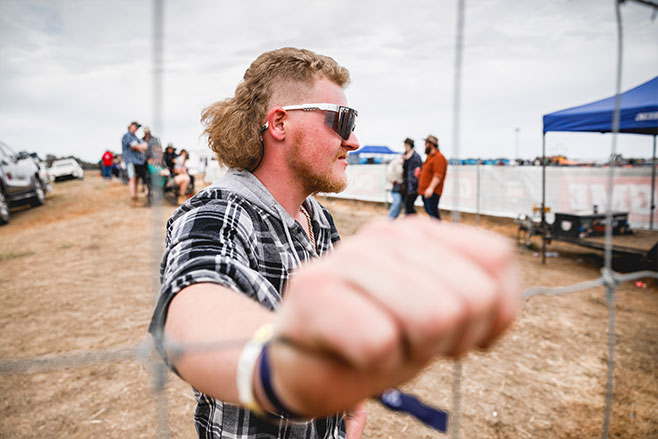
While sales of all one-tonne and dual-cab utes certainly seem to suggest punters are taking the bait, do these high-riding, four-wheel drive favourites appeal to the most discerning ute audience in the world?
To answer this question, we took a pair of hopefuls to the Deni Ute Muster’s 21st birthday to try and predict what the festival would look like in another two decades. And virtually everything about the long weekend was a surprise.
Rather than presenting the somewhat predictable blue oval and lion badged representatives, we took a different approach.
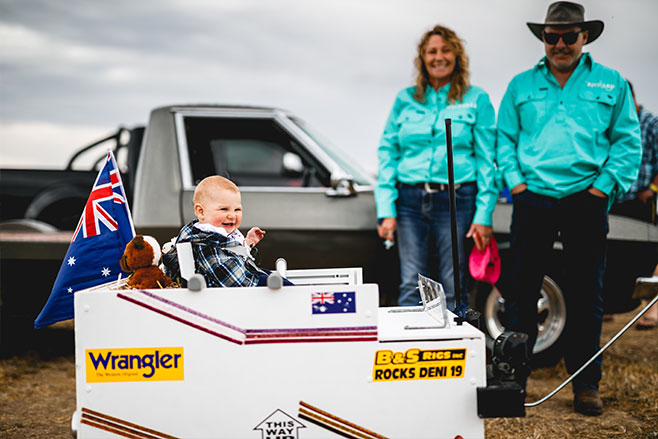
If true-blue patriotism died with the end of local production, surely a new generation of ute buyers wouldn’t care for the nationality, instead placing a greater priority on value? In the red corner, therefore we have SsangYong’s Musso XLV – a full-sized dual-cab from South Korea with four-wheel drive, diesel power and a bargain $40,000 price tag.
In the black corner, there is something very different – the Ram 1500 Laramie – the only vehicle on the market that might just satisfy a diehard traditionalist who insists on a petrol-powered V8ute to replace their SS or XR8.
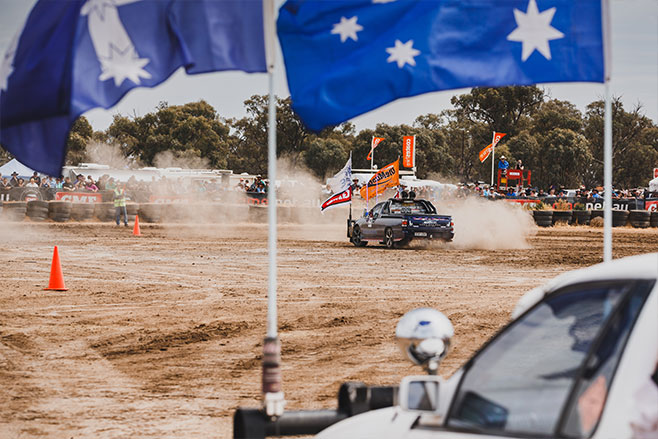
Either the pair of alternatives will be accepted as worthy substitutes, or we will be torn to shreds by the melee as barefaced traitors in the eyes of true-blue patriots.
But rather than swarming the foreign invaders seconds after arrival and tearing off parts like safari park monkeys, the crowd was surprisingly merciful. Instead of the animosity I had expected, was replaced by cautious curiosity.
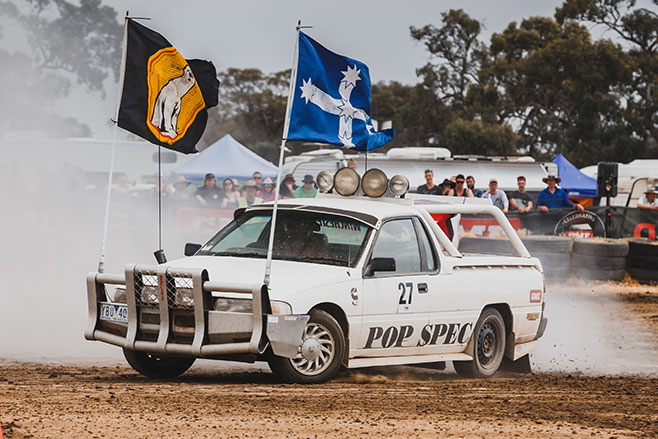
In the case of the SsangYong, some said they initially mistook it for a Colorado, others reported that it looked ‘good’, while others claimed the price was genuinely compelling. And the Ram had an even easier ride.
Unsurprisingly, its 5.7-litre petrol ‘Hemi’ V8 struck a chord with almost all ute aficionados and its sheer unapologetic size, conspicuous styling and acres of chrome-look trimming won over even more fans.
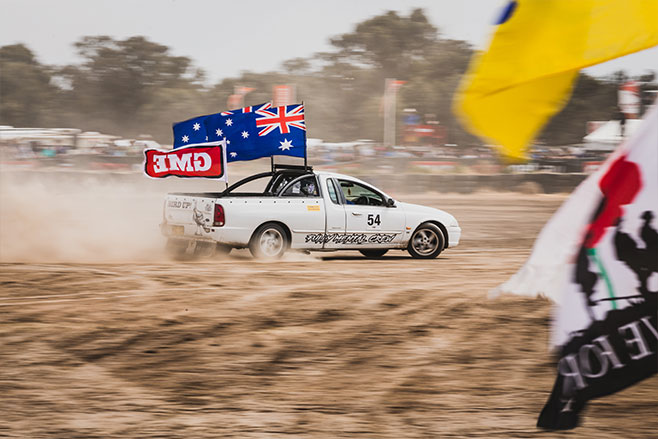
A tougher crowd however, was found in the ‘Sports Arena’ queue. ‘Sports’ may be a slightly misleading title, but out here, racing through a course of barrels head to head with another competitor, or simply applying a little artistic interpretation during the ‘Circle Work’ event is considered sport, and who are we to argue?
These guys are about as traditional as they get. Massive five-post roo-catchers, insanely loud exhausts and more stickers than paint applied exclusively to Ford or Holden hardware of all ages. No speed limiters were necessary since the sheer number of flags adorning each ute provided as much wind resistance as a re-entering space capsule.
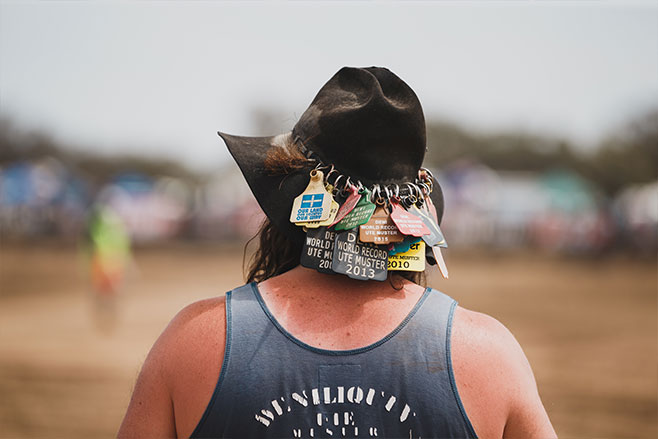
How would our pair of hopefuls fare in front of this unorthodox panel? Not great, it turns out.
While some merit was awarded to the Ram for its thirsty and theatrical V8, both lost points for looking a little plastic in the company of some seriously agricultural kit – never has that term been more appropriate.
The competitors also raised concerns regarding maintenance, and we’re not talking service intervals. Out here, if a red motor drops a cylinder, you’ll probably find the correct HT lead in the local IGA, but if a South Korean model throws up a fault code, the nearest diagnostic machine is probably in … South Korea.

It may be a moot point for us city folk, but try explaining that to a stockman (or stockwoman) who has fixed every car they’ve ever owned with bailer twine and a gas-axe. As the saying goes out here – if it moves and it shouldn’t – cable ties. If it doesn’t move but it should – WD40 spray.
Things didn’t go much better at the show-and-shine where the judges applied the same strict criteria as to all entrants. Both cars lost points for looking as if they had been driven 300km and then parked in a windy, dusty field for two days – which they had.
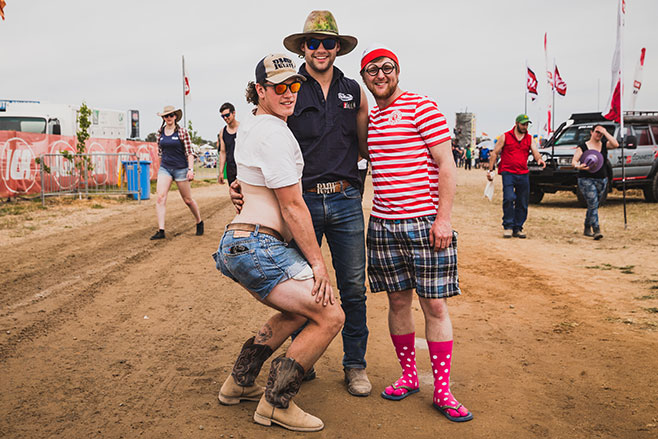
Once again, the Ram garnered more support with its dual exhaust, mighty engine and imposing proportions winning favour, while the SsangYong clawed back some praise for being red.
Harsh local criticism aside, allow us temporary custodians to interject with a touch of unbiased objectivity. Firstly, when the final Aussie-made V8 ute has oxidised and been carried away by the wind, it’s likely you’ll still be able to buy the American-made V8 Ram. And if you loaded three VF Commodore Utes onto a trailer, the Ram could tow it.
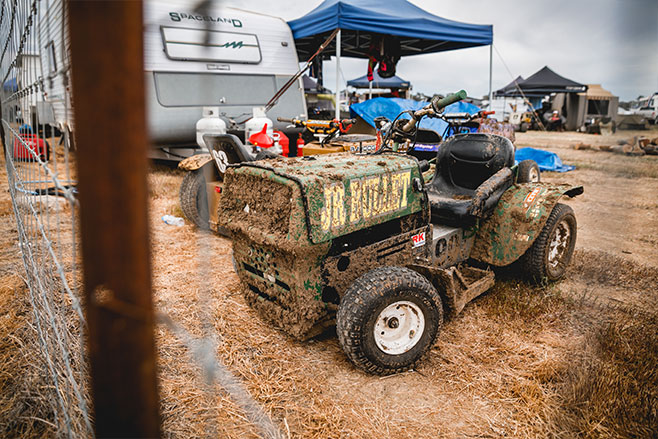
Furthermore, the Musso offers a massive tray almost as large as the Ram’s, switchable four-wheel drive, an efficient diesel that produces 420Nm of torque and the range starts at just over $30,000 so, I’m sorry, both still have a place out here along with many other options too.
It is however, unrealistic to expect any newcomer to be as warmly received as something home-grown wearing a blue oval or lion badge, and there are many who will never accept anything else, but at no point did anyone claim that either of our cars didn’t have a place at the ute muster.

Beneath the layers of dust and airborne hydrocarbons, a sense of inclusiveness underpins this entire festival and there is a warming camaraderie between people and utes. After all, these are the people who even on a good day have some of the toughest jobs in the world but now have a crippling drought to deal with too. If you can’t love and respect your neighbour then you have as close to nothing as you can get.
But when country folk get together, it does not necessarily result in the post-apocalyptic combination of night-long burnouts, key-banging and lawless trouble like Lord of the Flies in a field. Dare I say it, it was mostly rather civilised.
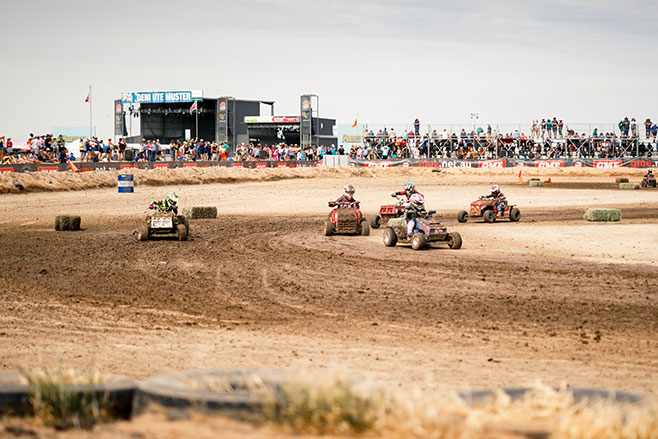
Yes, at some point a ute did get rolled on to its roof and set on fire, and there were scenes that I swear I’d previously seen in a Mad Max instalment, but that’s not all this festival is about. On the contrary, there was good food, shopping, there were families, kids playing, young and old, and all united by a common love of utes and country music.
An affordable South Korean one-tonner and oversized Yank tank may never become the prevailing favourite in the Deniliquin paddocks but, like a group of southern softies visiting for the weekend, neither will they ever be turned away.





